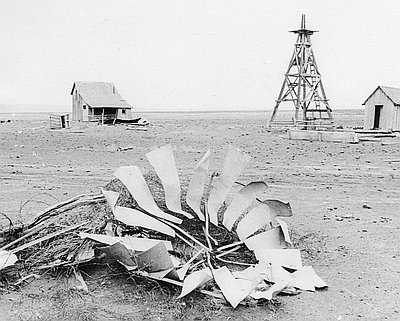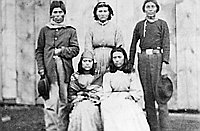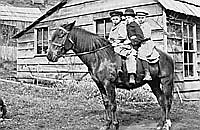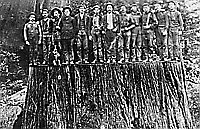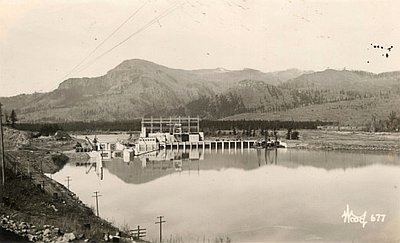Reclaiming the Land
Passage of the Newlands Reclamation Act in 1902 heightened expectations in Oregon that federal money would be available to develop irrigation projects in the arid regions of the state. In quick order, the newly established U.S. Reclamation Service carried out a series of surveys and investigations of the Malheur, Willow Creek, and Owyhee areas in eastern Oregon; the Umatilla district in the northeast; and the Klamath Basin in the south-central part of the state.
Under the Newlands Act, the secretary of the interior could designate irrigation projects and establish a reclamation fund from public land sales to finance the construction of reservoirs, canals, laterals, and the like. The Klamath Irrigation Project in 1905 was the most significant of the early reclamation undertakings in Oregon. The basin’s irregular valleys, shallow lakes, and swamps—home to one of North America’s most prolific waterfowl-breeding areas—were remade into irrigated, highly productive agricultural land. The system of dams, dikes, canals, ditches, and drainage arterials east and south of Klamath Falls created 233,000 acres of potentially irrigable land. When the project was completed, only about 40 percent of the original 185,000 acres of wetlands remained.
Another early Reclamation Service effort focused on the Umatilla River, where the federal government funded the construction of a 100-foot-high, earth-fill dam to provide irrigation water to an area east of the Columbia River. Even though canals were operational by 1910, the project was never successful, perhaps due to the poor quality of the soil. The larger Umatilla area became the setting for more ambitious plans when the Umatilla Rapids Association was formed in the early 1920s. The organization pursued an aggressive lobbying campaign to build a large dam on the Columbia River that would serve both irrigation and navigation interests. The dreams of its promoters were realized when McNary Dam was completed at Umatilla Rapids in 1953.
Of Oregon’s pre-Depression reclamation projects, the Vale-Owyhee undertaking in the southeastern part of the state was the largest and the most ambitious. Although the Reclamation Service had surveyed the lower Malheur and Owyhee valleys in 1903, the agency did not begin funding the project until 1927. Vale-Owyhee, part of larger reclamation enterprises on the Snake River, was a vast engineering scheme that would reconfigure both the Malheur and Owyhee valleys through a series of tunnels, canals, and huge siphons. The project included the construction of 360-foot-high Owyhee Dam, a 3.5-mile-long diversion tunnel, 5 miles of additional tunnel, a steel siphon 2.5 miles long, and 200 miles of canals. The completed project could irrigate 105,000 acres and provide supplemental water for another 63,000 acres.
When engineers finished building the infrastructure for the water-transfer system in the late 1930s, changes were set in motion that would transform eastern sagelands into row-crop agricultural production. The Vale-Owyhee and Snake River projects would eventually deliver inexpensive water to some of the largest agribusiness operations in the region.
Promoters and dreamers had ambitions for promoting agriculture in Oregon that had little potential for reclamation development. Railroads, land companies, and boosters campaigned to promote dryland agriculture in the High Desert, especially around Fort Rock, Christmas Valley, and Silver Lake. Encouraged by James J. Hill’s railroad interests, booster literature, and the Enlarged Homestead Act of 1909, promoters gulled hundreds of people to take up homestead claims in the region between 1910 and 1915, effectively selling the idea that the area was suited to wheat production. Only half of the homesteaders remained long enough to gain fee title to their land. Most moved on to other enterprises, many to the booming sawmill town of Bend.
© William G. Robbins, 2002. Updated and revised by OE Staff, 2014.
Sections
Related Historical Records
James J. Hill in Bend, 1911
This photograph of James J. Hill speaking in Bend was taken moments after he hammered the golden spike to complete the Oregon Trunk Railway on October 5, 1911. …
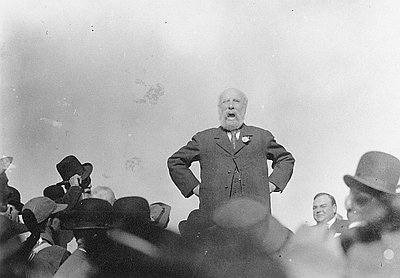
Abandoned Ranch, Christmas Valley, 1963
This photograph was taken in April 1963 by Oregon Journal photographer Al Monner. It shows an abandoned ranch in southeastern Oregon’s Christmas Valley. During the 1910s, hundreds of …
